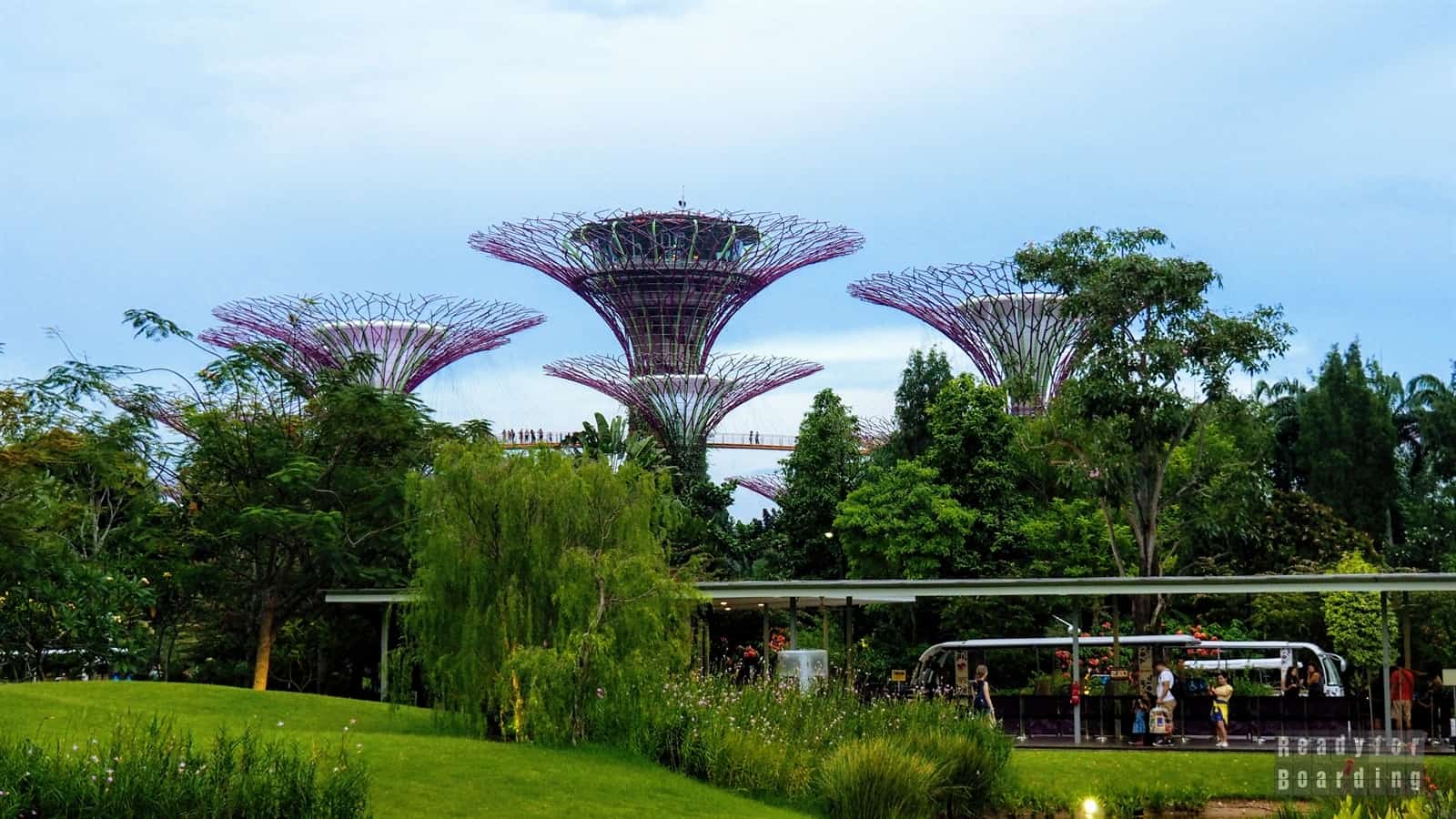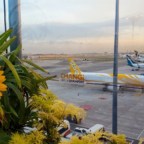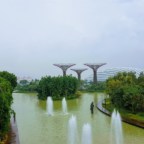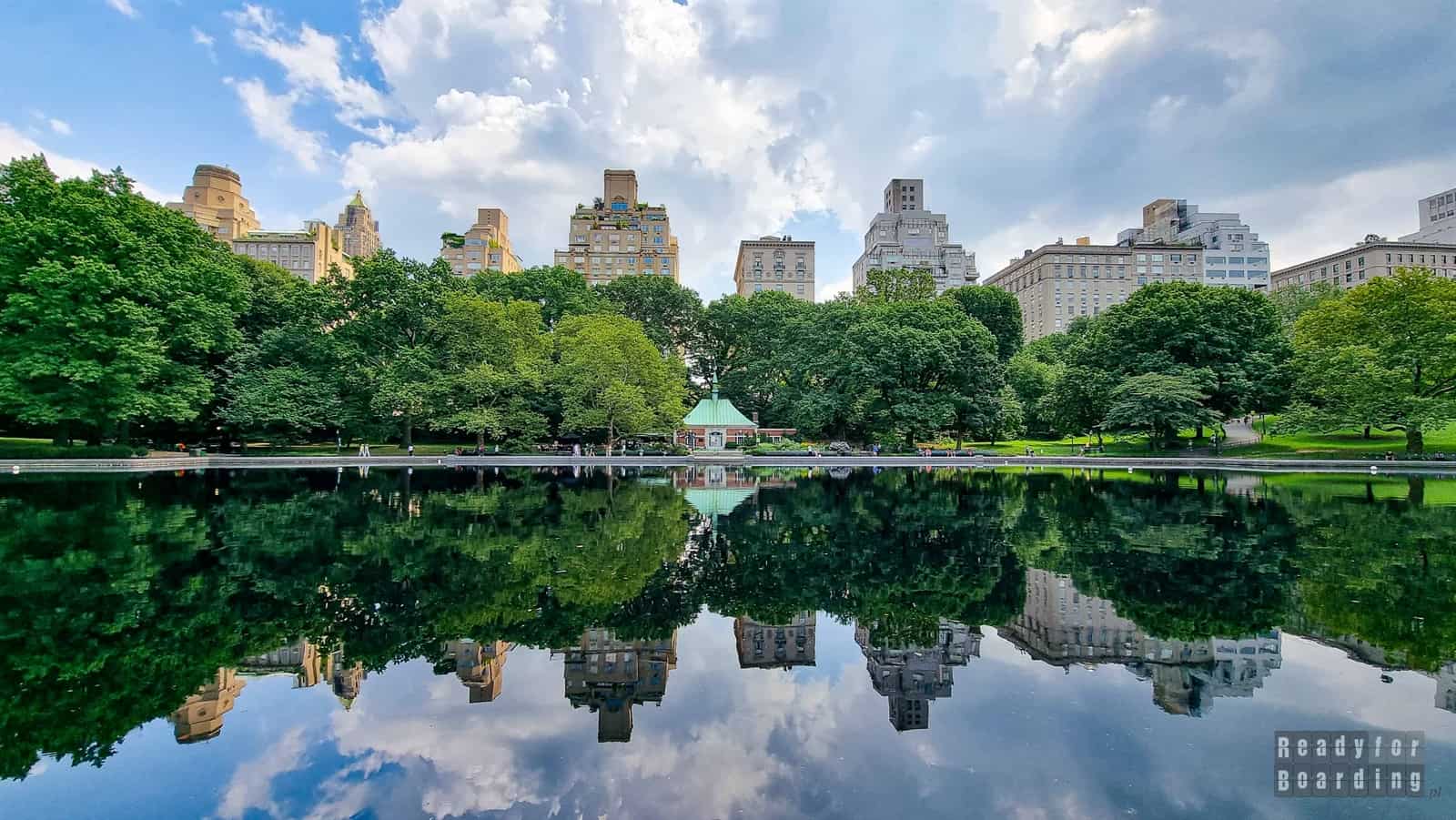We have prepared for you a handful of practical information that will come in handy before traveling to Singapore. It will be about public transportation, getting from the airport, the cheapest internet, accommodation, shopping, eating and much more!
Singapore is not a cheap country, but there are ways to cut the cost of our stay there, and we’ll give you some such practical tips today, from how to get from the airport, to choosing a SIM card, to where to eat and where to spend the night.
Table of contents
Getting to and from Singapore Changi Airport
From Singapore Changi Airport, you can get to downtown Singapore using city buses, shuttle buses, the subway or taxi/Uber. Each of these options has its pluses and minuses, but if price is most important to you then the cheapest way to go is by subway. You have to pay about S$1.7 for a ride to the center, which is less than S$5 per adult (you only have to reckon with a change at Tanah Merah station). The drive to the center takes about half an hour.
It’s longer and more expensive to take the bus (about an hour and costs about S$2.5), and if you buy a ticket from the driver it’s important to have the right amount ready, because you won’t get change.
An even more expensive option is the Shuttle Bus, which take you to specific hotels. The ride costs S$9 per adult and S$6 per child under 12.
A cab is the most expensive option and, depending on the time and destination, can cost more than 30 Singapore dollars (83 zlotys).
We chose Uber, mainly because of the convenience and the fact that we were landing very early in the morning and the subway was not yet running at that time, and we did not want to wait any longer. We paid less than S$20 for the course. As far as we know, Uber has been taken over by Grab, so it’s no longer possible to drive Uber around Singapore.
You can read about the airport itself here.
Public transport
Public transportation in Singapore works great and is almost reliable. We moved mainly by subway and had little trouble getting around with a baby stroller, although sometimes we had to carry the stroller up a few stairs. Everything ran according to schedule, and the signage is sufficient to catch all the trains and directions. Only to the Singapore Zoo we took an Uber, because from our overnight stay the commute was getting long and complicated.
It is best to buy a card that can be recharged with a larger amount, and the system itself will eventually choose the best fare, depending on where and how much you drive.
The price of a single ride ranges from S$1 to S$3.
There is a special Singapore Tourist Pass for tourists, which allows unlimited travel:
- 1 day – S$10 (£28)
- 2 days – S$16 (£44)
- 3 days – S$20 (£55)
Children under 0.9 meters travel for free.
Internet in Singapore
Why are we writing about the Internet right away? Because at the airport you can buy SIM cards, which are useful if only to order an Uber/Grab :) So we directed our first steps after collecting our luggage to the windows where you can purchase SIM cards. And here’s a note of caution right away: offers vary significantly and you can easily overpay. We, by design, wanted a card just for the Internet, which we put in the router.
Check out the photo below of the points where you can purchase SIM cards:
And what their offerings look like up close:
If you are interested in internet alone then you should of course choose the option on the right, which is a card for tourists for S$15, which gives 100 GB of data and is valid for 7 days. The package includes free minutes and texts so you can call too. A passport must be presented at the time of purchase.
In good conscience, we recommend the Singtel offer – the Internet worked perfectly and did not disappoint.
Where to spend the night?
Your head will hurt from the choice of places to sleep. Singapore offers top-notch hotels, including the famous Marina Bay Sands, where accommodations cost from £1,000 per night for two people (with a good promotion and well in advance).
However, if you are looking for cheaper options, Booking.com comes to the rescue, as always, where budget dormitory accommodations can be had from as little as 60-70 PLN/person/night.
Looking at hotels that have relatively good reviews and sometimes even breakfast included in the price, an overnight stay in such a place costs from about 350-400 zlotys per night.
Our choice was Airbnb – it was not the cheapest option, but once again comfort won :-) We had a small apartment for ourselves with a kitchen and a separate bedroom on the 25th floor, so the views did the job :)
Where and what to eat?
Two words: Food Courts! They were recommended to us by a smug lady Uber driver (or driver as you prefer) on the way from the airport. At first we were apprehensive, we couldn’t find our way around them and choose the right food, because the first food court we went to differed from what we had heard before, but we were able to overcome our fear quite quickly and by the end of the trip we were eating at food courts almost every meal. Especially since there were a lot of them in the vicinity of our overnight stay, and they were open late. At first we were concerned about the quality of the products and whether we could safely give them to the baby, but we quickly found that the food served was good and fresh.
Food courts are those places that somewhat resemble a cafeteria, with numerous tables in the middle surrounded by various food stands. There is a real mix of dishes from different parts of Asia and there is something for everyone. Also, the food courts themselves vary – there are more and less “exclusive”, more expensive and cheaper…. So you need to try, test and find the best solution for yourself.
What are the prices like? Diverse! You can eat something nutritious for as little as 10 zloty, and you can order larger dishes or portions for, for example. S$10, or just under 30 zlotys. We ordered a lot of smaller dishes during the day to sample as much as possible, and for dinner we ordered larger dishes to take away, of which we usually still had some left over for breakfast ;)
The local coffee and tea and their strange abbreviations were also a big mystery to us: Kopi O, Kopi C, Teh, Teh O, Teh C, etc. We finally managed to figure out that the mysterious O and C are simply sugar and milk :) Below you will find a small download:
In Singapore you will also find popular and familiar fast food joints, cafes and more upscale restaurants, but we got so into local food that we didn’t even look there :)
Shopping and prices in Singapore
While in Singapore, we very rarely went to typical grocery stores. We went to the nearby market a few times to buy some fruit, drinks, something for breakfast, but we dined mostly outside. Unfortunately, fruit is very expensive, so we either bought in promotions or freshly squeezed juices at stands on the street (perfect refreshment).
In typical supermarkets, the supply is very good, and if you will be looking for stores then look around for example Fair Price, Giant or Cold Storage. Of the smaller ones, of course, it’s 7eleven, of which there are quite a few in Singapore.
Sample prices in stores:
- Water 1.5 liters – S$1, or about PLN 2.75
- Coca Cola 1.5 liters – S$2.5, or about $7.
- milk 1 liter – S$2.5, or about PLN 7
- bread – S$2, or about PLN 5.5
- beer 0.33 liters – S$6, or about PLN 16.5
- Apples 1 kg (as a curiosity – you can find from Poland ;) ) – S$ 5.5, or about PLN 15
- bananas 1 kg – S$ 2.5, or about PLN 7
If you are interested in industrial shopping, electronics, clothes, etc. then every now and then in Singapore there are shopping malls with stores, including chain stores, but also very exclusive brands (the most popular place is Orchard Road).
Have a look in Chinatown, where there is a glut of Chinese food including many souvenirs from Singapore, although more “made in China.” Both Chinatown, Arab Quarter and Little India have small stores, stalls where you can buy items more traditional to these regions.
Some practical tips
Finally, a few more tips:
- English is common and you should have no problem communicating in this language (it is one of several official languages, by the way). We hit problems a couple of times: in food courts and once with an Uber driver, but despite the language barrier they were very cooperative :)
- Remember the many prohibitions, which can be surprising. We wrote about them here.
- A visa for Polish citizens is not required for stays of up to 90 days. At the airport, however, you need to fill out special forms, which are distributed while you are still on the flight.
- The currency is the Singapore Dollar (SGD or S$), but we had little to do with the currency itself, as we mostly paid by debit card and had no problem with it anywhere.
- Electrical sockets (contacts) in Singapore are different from those in Poland, but are identical to those in the UK. You need adapters. You can find them on Allegro or in stores like MediaMarkt.
- Also remember that Singapore has left-hand traffic.
- No additional vaccinations are required. None of us had additional vaccinations for extra diseases.
- Singapore is an incredibly safe country. Crime is almost non-existent, mainly due to the huge penalties (including floggings), but as always, it’s a good idea to take care of your belongings and have eyes around your head :)
- It is also worth purchasing
insurance
. In Singapore, we are not covered by any insurance (including EHIC), and medical costs are not among the cheapest.
We also recommend you our other posts:
- TOP 9 places in Singapore you must see!
- Singapore city of bans – 16 bans that will surprise you!
- 6 things you need to know before you go to Singapore with your child
- Sentosa – 5 reasons to visit the island
- Gardens by the Bay: a true ecological cosmos!
- and about how we flew to Singapore with little adventures :)
Summary
Is Singapore expensive? Yes, especially when compared to other Asian countries. However, there are ways to keep travel costs down. However, it is worth being aware of prices and costs on the ground to better plan your trip to this region of the world.






















